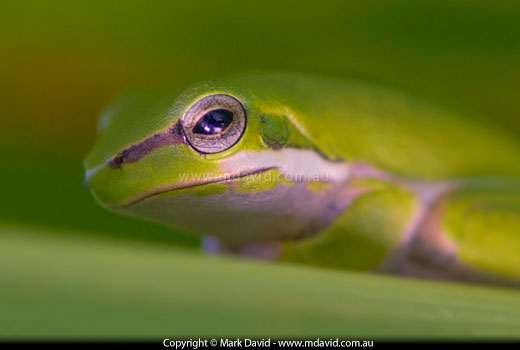
Sometimes in photography everything’s working against you, but you can still take photos.
Previous tip | Next tip

The tree frog shown above was tiny, in very weak light, and perched well away from where I could reach it with a tripod. Plus I’ll add to that mix my self-imposed limitation which is that I choose not to use a flash with tree frogs because of their sensitive eyes. By now I think I’ve described the perfect raw ingredients for a blurry, boring shot.
The challenge was getting enough of that weak light into the shot, while using a shutter speed fast enough for hand-held macro work. Thankfully we always have the option of opening up our aperture as much as possible — in this case it was f/2.8. That big aperture brightens things up but it also gives you a small depth of field, especially in macro. But I figured a small depth of field could look good. As long as the eye was sharp I’d be happy.
By holding the camera perpendicular to the eye I was able to get the entire surface of it inside the extremely thin range where things would look sharp. The rest of the frog could blur away as much as it needed. We all know it’s a frog — now I wanted this photo to be about the eye.
It took a few attempts to perfectly focus on the eye. No dramas — I was shooting digital so it’s not like I was wasting film.
The result was this photo where the frog blurs away nicely into its green background. Sure, it’s not the same as my usual frog photos, but then who wants to only take the same photo every time?








